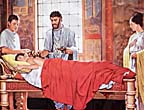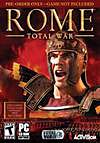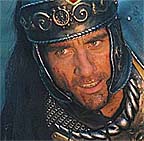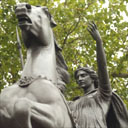Hellenic Influence On Modern Law Codes"Many contemporary legal scholars claim that the American legal system has its roots in Rome, and more specifically, the legal codes of Gaius and Justinian. Others trumpet the English system of common law, and contend that it is the rightful forefather of our current legal system. These views are not completely merit-less of course. But to the extent that they seek to disclaim the role played by ancient Greece in creating today's modern legal institutions, they do a grave injustice to our collective understanding of law and its origins."
"Our comparison begins with an examination of the overall structure of the two legal systems. Using 4th century BC Athens as a point of reference, one sees that the ancient Greeks devised their court system to handle two basic types of cases: the private case (dike), and the public case (graphe). The dike was used to resolve private, individual disputes between litigants (e.g., failure to pay for goods received), while the graphe was used to resolve disputes that impacted the community as a whole (e.g., treason). Most courts in the United States possess a similar structure: a private citizen claiming some type of personal harm can bring an action as a plaintiff in a "civil suit," while government prosecutors, acting on behalf of the entire community, can bring criminal suits against individuals not for compensation, but to effect community-based penological goals such as retribution and deterrence."
"In ancient Greece, both dikai and graphai were initiated by filing a written complaint and "summoning" the defendant to the magistrate."
"Moreover, both cultures implemented a jury system to make determinations of guilt and innocence...although juries in ancient Greece were generally larger than the ones we empanel today - for instance, a jury in Athens could consist of several hundred, and in certain rare instances, several thousand members - the critical point is that, in both societies, the most consequential decisions were left to a jury of the accused's peers."
"One commonly voiced criticism of the ancient Greek legal system is that, unlike the legal systems of ancient Rome and modern America, it operated without the benefit of lawyers. This criticism is misplaced, however, because ample guidance was available to ancient Greek litigants in the form of the logographos. The logographos was, in essence, a speechwriter who usually had considerable experience either litigating or observing trials. As such, skilled logographoi such as Demosthenes and Isocrates were in high demand, just as skilled American lawyers like Plato Cacheris are here today."
"Other similarities abound between the two legal cultures. For instance, a concern about frivolous lawsuits, and a procedural device to discourage them, is a hallmark of both ancient Greece and modern America. Procedures for alternative dispute resolution" are another characteristic of both legal regimes. Statutes of limitation, which serve to define the time frame within which a claim must be commenced, are an integral part of American legal system, and there is widespread scholarly agreement that these laws find their origins in the real property laws of ancient Greece.
 I was rewatching a fascinating program on Galen the other night on the History Channel that included a model of a Roman hospital or Valetudinarium. It used the inner courtyard flooded with sunlight for the operating theater. It had consulting rooms, a kitchen for food preparation, an area where instruments were sterilized in forge-like structures all surprisingly similar to a modern health care facility.
I was rewatching a fascinating program on Galen the other night on the History Channel that included a model of a Roman hospital or Valetudinarium. It used the inner courtyard flooded with sunlight for the operating theater. It had consulting rooms, a kitchen for food preparation, an area where instruments were sterilized in forge-like structures all surprisingly similar to a modern health care facility.
 This is a very interesting article about the different types of dogs used in ancient Greece and Rome. It even mentions that hounds were imported from Britain before the conquest:
This is a very interesting article about the different types of dogs used in ancient Greece and Rome. It even mentions that hounds were imported from Britain before the conquest:





 Well, I took off work early yesterday so I could see Bruckheimer's new King Arthur on opening day. I liked this new darker version of Arthur and his knights although I felt the film suffered from some bad film editing trying to fit it into a shorter time slot than it deserved. I think there should have been a more in-depth introduction of characters and examples of experiences that resulted in their bonding as a combat unit and brotherhood that occurred over time as they served together. The film opens with Lancelot being "drafted" and taken from his Sarmatian family as a youth. Then the film jumps ahead 15 years and Arthur and his battle-hardened cavalry are seen riding to the rescue of a bishop traveling to a fort along Hadrian's wall. There is an obvious bond between the men but the viewer is not given any background for this close bond or the legendary exploits that others in the film refer to.
Well, I took off work early yesterday so I could see Bruckheimer's new King Arthur on opening day. I liked this new darker version of Arthur and his knights although I felt the film suffered from some bad film editing trying to fit it into a shorter time slot than it deserved. I think there should have been a more in-depth introduction of characters and examples of experiences that resulted in their bonding as a combat unit and brotherhood that occurred over time as they served together. The film opens with Lancelot being "drafted" and taken from his Sarmatian family as a youth. Then the film jumps ahead 15 years and Arthur and his battle-hardened cavalry are seen riding to the rescue of a bishop traveling to a fort along Hadrian's wall. There is an obvious bond between the men but the viewer is not given any background for this close bond or the legendary exploits that others in the film refer to.

